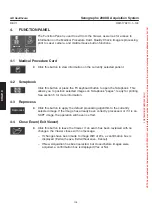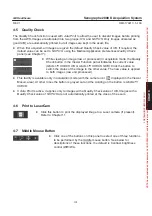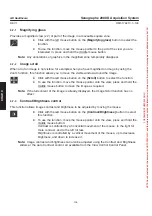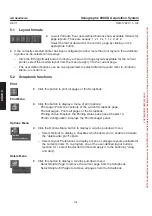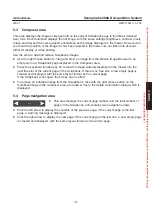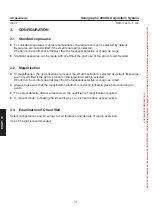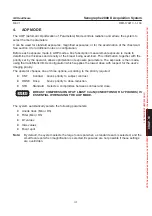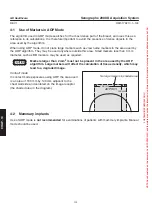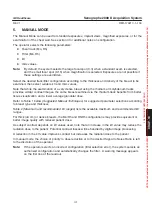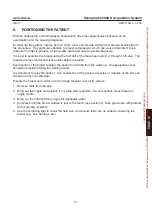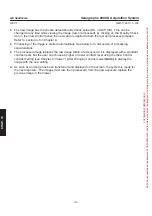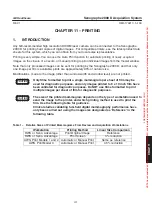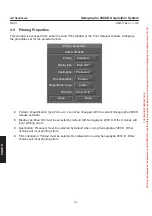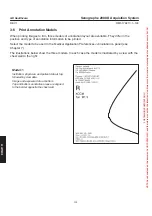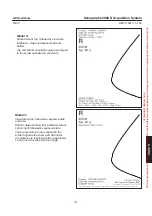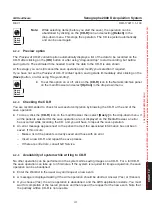
CHAP
. 10
GE Healthcare
Senographe 2000 D Acquisition System
REV 1
OM 5179217–1–100
118
7.
COMPRESSION
To apply compression to the breast, depress the compression pedal. Manual adjustment can be made
using the two knobs, located on each side of the compression paddle holder. Take great care with
patients with mammary implants. The compression force is displayed on the Gantry readout panel,
and can be displayed on the image as an annotation (see Chapter 9, section 3-1).
Note:
If the compression force is less than 3 daN, the display shows 0 daN.
The maximum compressive force on this unit is 20 daN.
It is important to use adequate breast compression because the benefits in image quality and dose
reduction are significant:
D
Compression reduces motion blurring by immobilizing the breast.
D
Compression reduces geometric blurring by ensuring direct contact between the breast and the
image receptor and by spreading glandular breast tissue.
D
Compression improves subject contrast and reduces scattered radiation in proportion to the
reduction in thickness of tissue irradiated.
D
Compression spreads the breast laterally, giving it a uniform and reduced thickness. This reduces
exposure and consequently the mean glandular dose.
Good compression is obtained when the compressed breast is taut to the touch.
Note:
As a safety measure, the compression system is fitted with magnetic braking to avoid
the paddle falling in the event of power loss. If power loss occurs during an
examination, a force of around 5 daN will remain on the compression paddle.
Disengage the patient by lifting the paddle gently (do not try to lift it quickly) to
counteract this compression force.
Note:
Automatic decompression can be programmed to occur when the exposure is terminated.
After exposure, press
(located on the right of the Control Console) for
decompression if automatic decompression is not selected in the program.
In the absence of the compression paddle, leave the space free between the
bottom of the paddle arm and the top of the image receptor assembly.
8.
THICKNESS
The thickness of the compressed breast is used in determining the glandular dose (AGD), and for
AOP calculations. It is displayed on the Gantry readout panel, and can be displayed on the image as
an annotation (see Chapter 9, section 3-1).
Note:
If the compression force is less than 3 daN, a thickness of 45 mm is displayed, regardless of
the true thickness of the breast.
CAUTION
CAUTION
FOR
TRAINING
PURPOSES
ONLY!
NOTE:
Once
downloaded,
this
document
is
UNCONTROLLED,
and
therefore
may
not
be
the
latest
revision.
Always
confirm
revision
status
against
a
validated
source
(ie
CDL).

